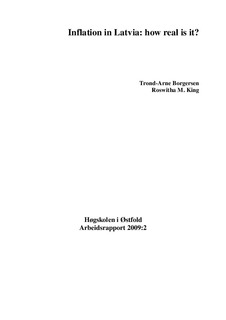| dc.description.abstract | This paper applies and extends the Scandinavian Model of Inflation for analysing determinants of inflation in Latvia. In recent years high inflation has been a persistent problem for advocates of Latvian participation in the euro collaboration. However, by allowing for transitional effects and separating the impact of nominal and real factors to inflation, where real factors are related to the structural shifts at the heart of transition economies, the recent inflation history becomes more understandable. The equilibrium effects accompanying real factors are shown to be the key component of overall inflation over the last 12 years, keeping non-structural inflation below the Maastricht criteria for most of the period. The real contribution to inflation provides Latvia with better prospects for future growth and higher standards of living, and should hence be less worrisome than the nominal contribution. Still, when it comes to compliance with the Maastricht criteria, no distinction is made between the two, complicating convergence for transition economies | en |
